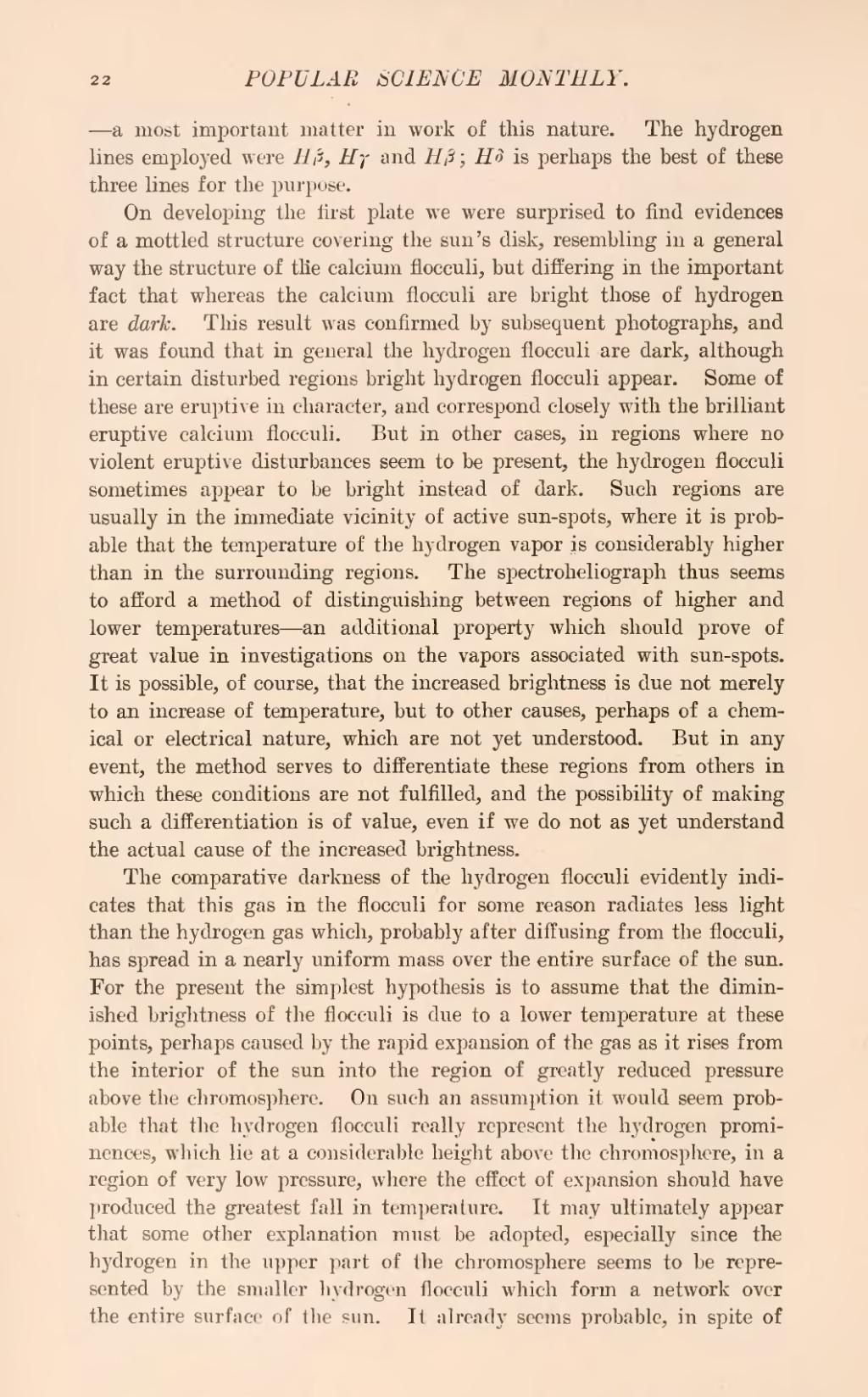—a most important matter in work of this nature. The hydrogen lines employed were Hβ, Hγ and Hβ; H$ is perhaps the best of these three lines for the purpose.
On developing the first plate we were surprised to find evidences of a mottled structure covering the sun's disk, resembling in a general way the structure of the calcium flocculi, but differing in the important fact that whereas the calcium flocculi are bright those of hydrogen are dark. This result was confirmed by subsequent photographs, and it was found that in general the hydrogen flocculi are dark, although in certain disturbed regions bright hydrogen flocculi appear. Some of these are eruptive in character, and correspond closely with the brilliant eruptive calcium flocculi. But in other cases, in regions where no violent eruptive disturbances seem to be present, the hydrogen flocculi sometimes appear to be bright instead of dark. Such regions are usually in the immediate vicinity of active sun-spots, where it is probable that the temperature of the hydrogen vapor is considerably higher than in the surrounding regions. The spectroheliograph thus seems to afford a method of distinguishing between regions of higher and lower temperatures—an additional property which should prove of great value in investigations on the vapors associated with sun-spots. It is possible, of course, that the increased brightness is due not merely to an increase of temperature, but to other causes, perhaps of a chemical or electrical nature, which are not yet understood. But in any event, the method serves to differentiate these regions from others in which these conditions are not fulfilled, and the possibility of making such a differentiation is of value, even if we do not as yet understand the actual cause of the increased brightness.
The comparative darkness of the hydrogen flocculi evidently indicates that this gas in the flocculi for some reason radiates less light than the hydrogen gas which, probably after diffusing from the flocculi, has spread in a nearly uniform mass over the entire surface of the sun. For the present the simplest hypothesis is to assume that the diminished brightness of the flocculi is due to a lower temperature at these points, perhaps caused by the rapid expansion of the gas as it rises from the interior of the sun into the region of greatly reduced pressure above the chromosphere. On such an assumption it would seem probable that the hydrogen flocculi really represent the hydrogen prominences, which lie at a considerable height above the chromosphere, in a region of very low pressure, where the effect of expansion should have produced the greatest fall in temperature. It may ultimately appear that some other explanation must be adopted, especially since the hydrogen in the upper part of the chromosphere seems to be represented by the smaller hydrogen flocculi which form a network over the entire surface of the sun. It already seems probable, in spite of
